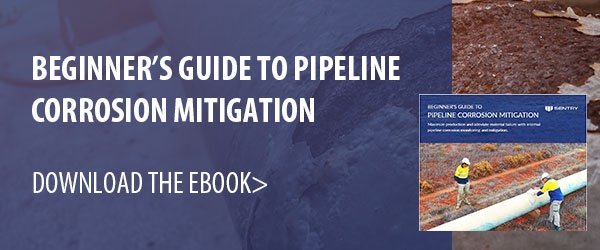
Chemical mitigation programs are a costly necessity for companies producing, transporting, storing and refining natural gas, gas liquids and crude oil. Optimizing these programs can result in immediate and considerable financial savings of 10%-30%. The first step in optimizing a program is to conduct a Chemical Optimization Audit.
What is a chemical optimization audit?
A Chemical Optimization Audit reviews a company’s chemical optimization program to determine if it’s meeting or falling short in protecting their assets with the least expense. This type of audit can be especially helpful for midstream plant operators having trouble ascertaining or maintaining their corrosion and chemical inhibition program.
It takes into account a variety of factors, including:
- Existing corrosion monitoring sampling
- Analytical method used to identify and measure contaminants
- Types of chemicals used
- Volume of chemicals used
- Method(s) of disbursement
- Minimum and maximum temperatures and pressures
4 chemical optimization audit steps
1. Identify corrosive targets and their size with sampling and analysis.
Chemical programs help reduce corrosion by implementing scavengers that target corrosion-causing contaminates such as hydrogen sulfide (H2S), carbon dioxide (CO2), oxygen and water. They also utilize corrosion inhibitors to coat the interior surfaces of equipment to reduce exposure to contaminates.
To prevent wasting these high-priced chemicals, it’s necessary to accurately measure the contaminates and the resulting corrosion rates.
The method of measuring these targets can make a significant difference. The most common method, detection tubes, has an extremely high percentage of error. These errors can be caused by the method used to draw the sample or using expired tubes that have been exposed to prolonged high temperatures.
Tubes should be chosen to facilitate the correct reaction rather than a quick easy to read mark. For example, a tube with a mercuric chloride reaction of a blue or purple color often produces a false high measurement of H2S when exposed to a common triazine-based chemical scavenger.
To make this assessment more challenging, the level of contaminates seldom remain constant within most hydrocarbon production, transportation, storage and processing facilities. Therefore, the location within the process system, the sampling method used and the time of day the measurements are taken will be a factor when a conducting a chemical optimization audit. Targets often move and change in size, so proper measurement is the most critical component.
2. Choose the proper chemical(s).
Chemical companies offer chemical blends specific to targets, target size and the condition of the process, such as excessively dry or wet, as in the case of natural gas processes. With regular target movement, choosing the proper chemicals are even more critical.
3. Determine the method of dispersion and distribution.
A chemical’s efficiency can be drastically affected by improper injection methods or unsuitable locations. In many gas pipelines, there is a shortage of long, straight, obstruction-free runs of pipe, while liquid pipelines my lack the adequate mixing and turbulence needed. Therefore, the proper method and locations for dispersion and distribution of the chemicals must never be ignored.
Each chemical utilized in a program must be strategically applied to single out and mitigate the target contaminants or condition. Utilizing the correct method of dispersion and distribution based on the chosen chemical’s purpose will fully optimize a program.
Proper dispersion and distribution of the injected chemical is critical for thoroughly treating the entire pipeline. A complete and thorough atomization with a positive displacement pump with adjustable volumes and high discharge pressure requirements is required for most chemicals used in a gas process. To optimize these same chemicals within a liquid process, they should be dispersed and distributed with a mixing probe, quill and/or static spool mixer.
However, it’s important to note that no single method will perform optimally for all chemicals, so it might be necessary to simultaneously implement multiple corrosion mitigation processes.
4. Measure results.
How do we know our mission was successful without accurate measurement? Measurement methods and devices typically have ranges of accuracy and repeatability from 1%-25%. When measuring in the parts per million (PPM) or even parts per billion (PPB) ranges, the range inaccuracies can prove devastating to a process or asset.
is your chemical mitigation program optimized?
Sentry has the expertise to understand the impacts of corrosion on a company’s assets, with the ability to provide insight into upstream and downstream impacts of chemicals and inhibitors. Our complete industry knowledge and experienced service techs allows us to work closely with a plant’s on-site technicians to provide a complete solution that meets your process needs.
Explore your options for corrosion monitoring and chemical optimization solutions.



